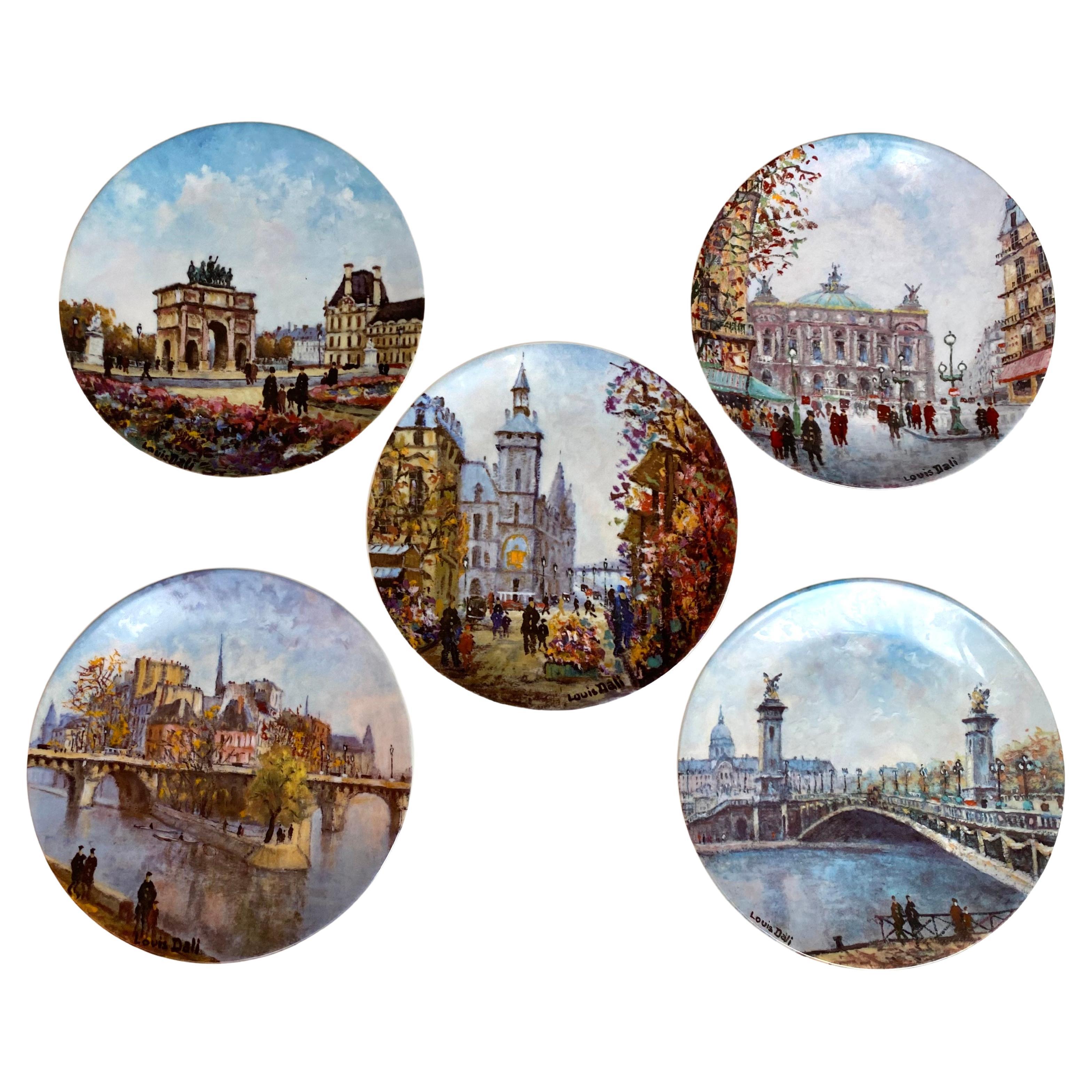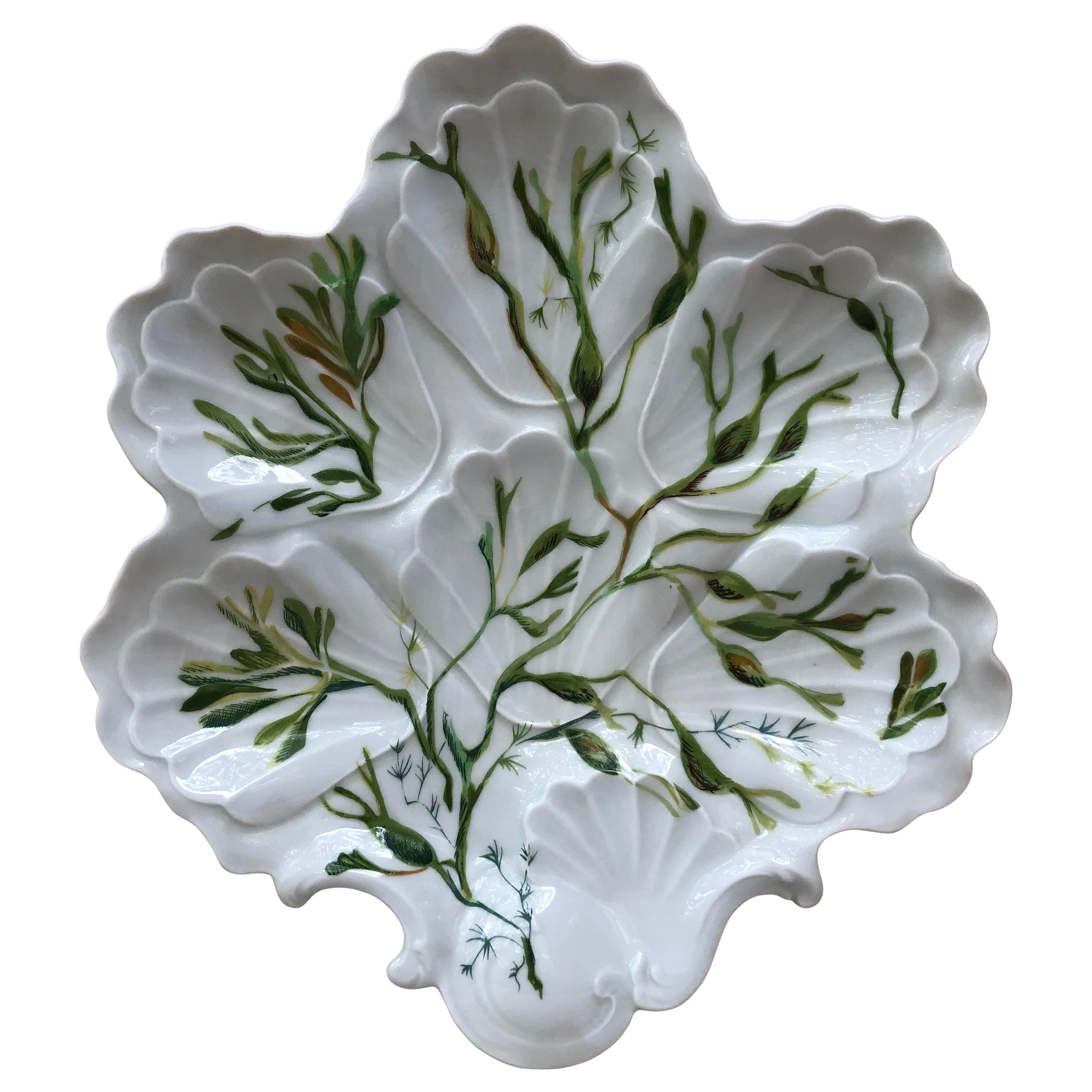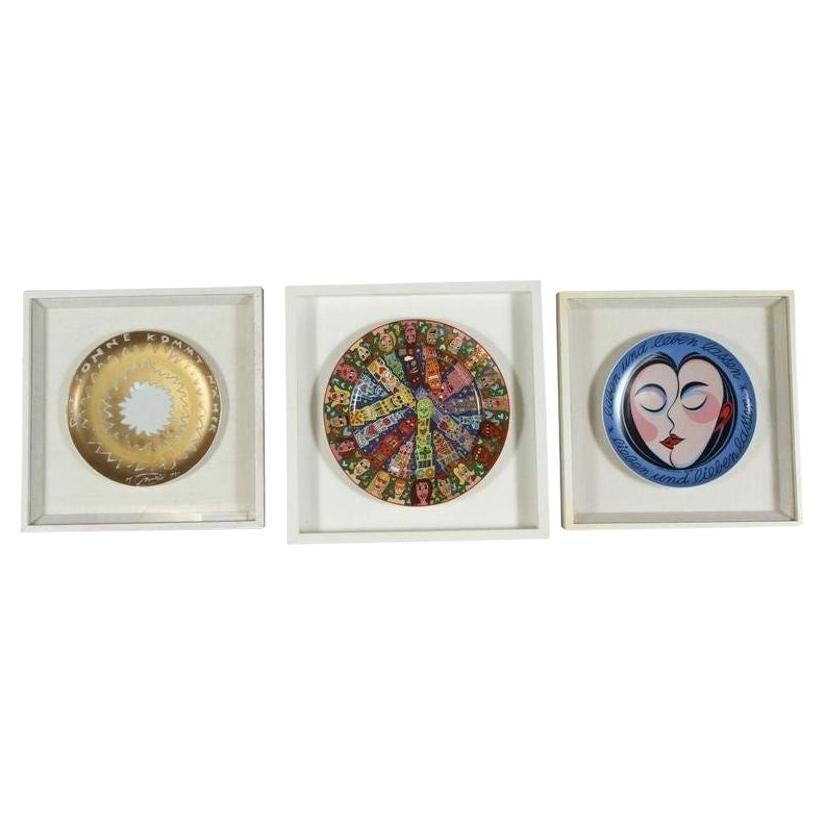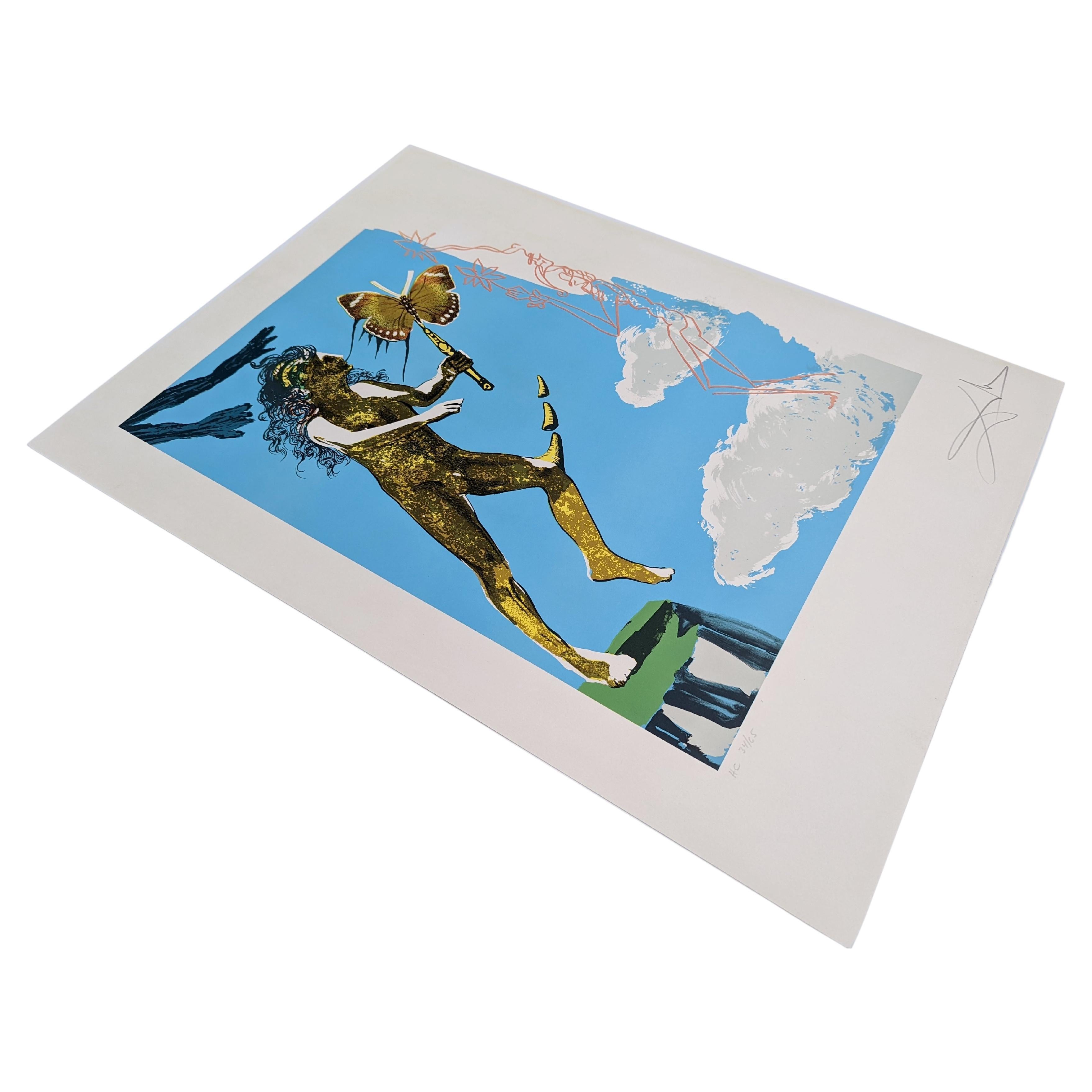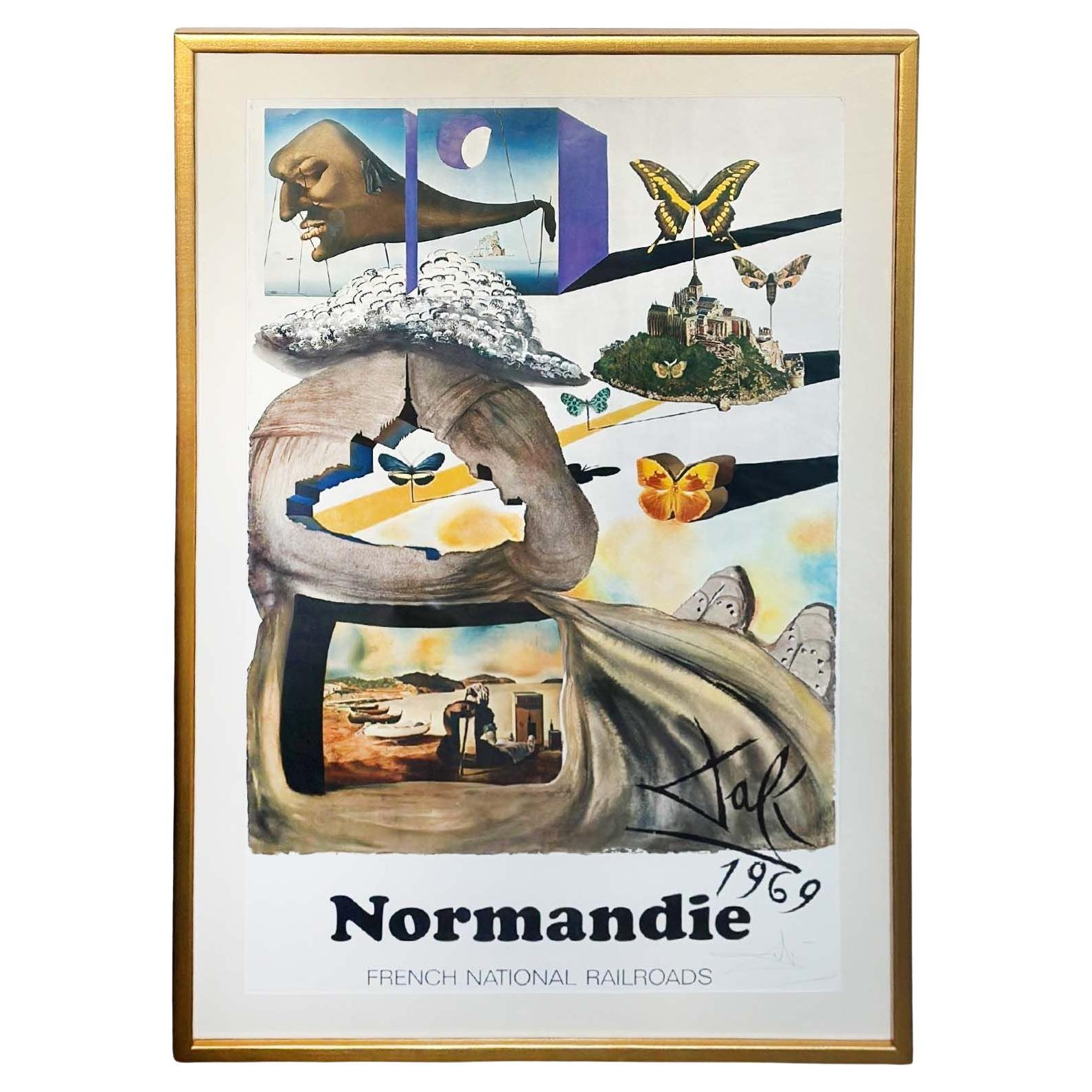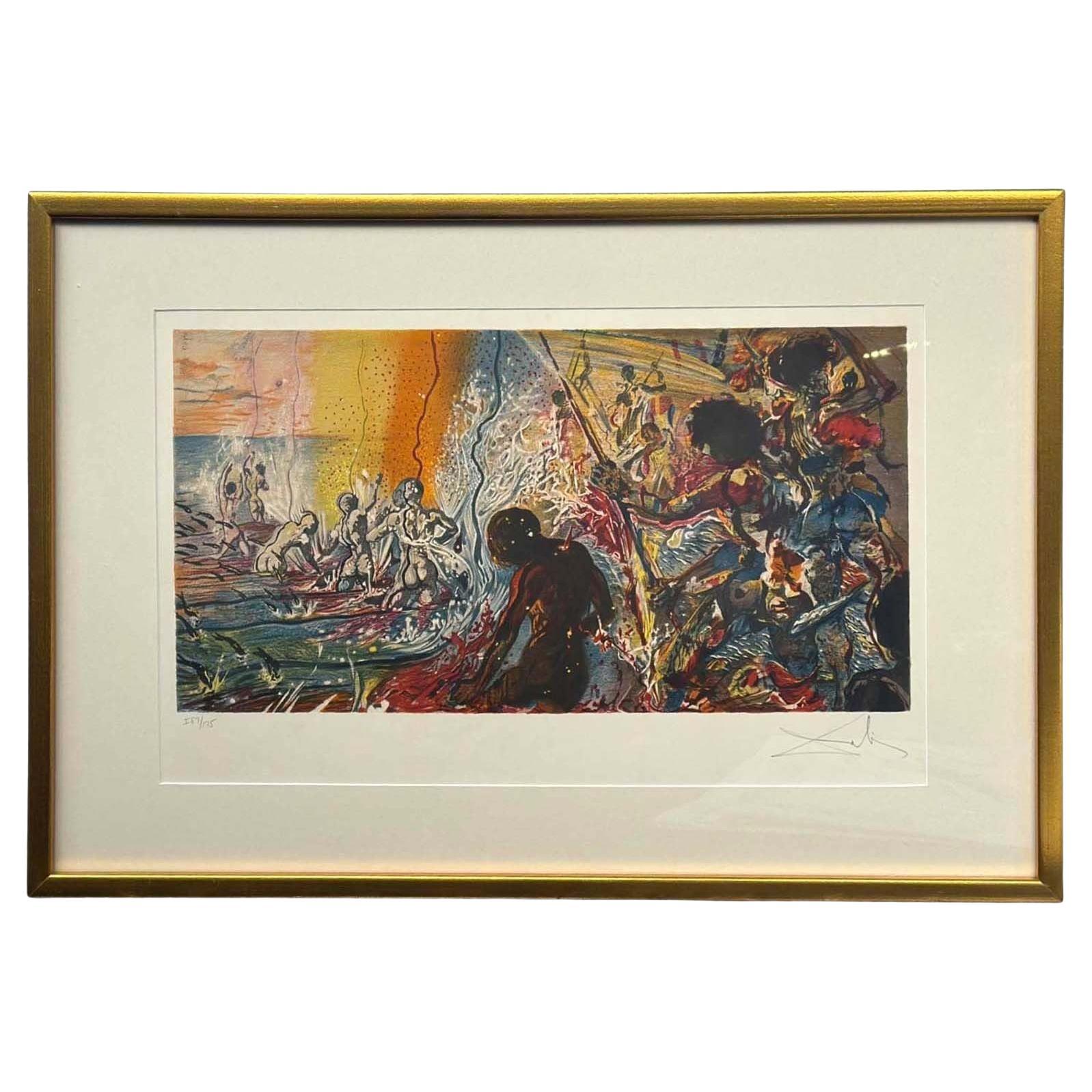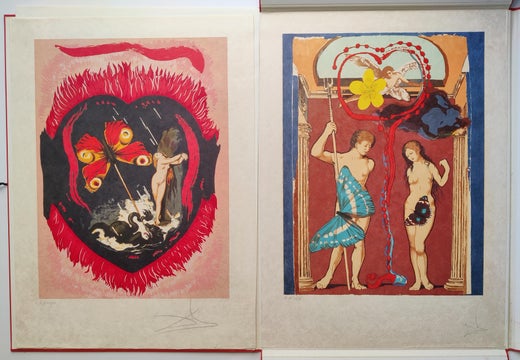Salvador Dali Porcelain Plates “Le Conquete du Cosmos” by Limoges Set of 6
About the Item
- Creator:Limoges (Manufacturer),Salvador Dalí (Artist)
- Dimensions:Height: 1 in (2.54 cm)Diameter: 8.5 in (21.59 cm)
- Sold As:Set of 6
- Style:Art Nouveau (Of the Period)
- Materials and Techniques:
- Place of Origin:
- Period:1980-1989
- Date of Manufacture:1980s
- Condition:Wear consistent with age and use.
- Seller Location:San Diego, CA
- Reference Number:1stDibs: LU936625206612
Salvador Dalí
Instantly recognizable by his waxed, upturned mustache, the flamboyant Salvador Dalí is one of modern art’s most distinctive figures. He is also one of the icons of the 20-century avant-garde Surrealist movement, whose dreamlike images, drawn from the depths of the unconscious, he deployed in paintings, sculptures, prints and fashion, as well as in film collaborations with Luis Buñuel and Alfred Hitchcock.
Dalí was born in Figueres, Catalonia, and even as a youngster, displayed the sensitivity, sharp perception and vivid imagination that would later define his artworks. In these, he conjured childhood memories and employed religious symbols and Freudian imagery like staircases, keys and dripping candles to create unexpected, often shocking pieces.
Dalí's use of hyperrealism in conveying Surrealist symbols and concepts that subvert accepted notions of reality is epitomized in what is perhaps his most recognizable painting, The Persistence of Memory (1931), in which he depicts the fluidity of time through melting clocks, their forms inspired by Camembert cheese melting in the sun. His artistic genius, eccentric personality and eternal quest for fame made him a global celebrity.
“Each morning when I awake, I experience again a supreme pleasure,” he once said. “That of being Salvador Dalí.”
Find original Salvador Dalí paintings, prints, sculptures and other works on 1stDibs.
- ShippingRetrieving quote...Ships From: San Diego, CA
- Return PolicyA return for this item may be initiated within 3 days of delivery.
- Porcelain Peint Main Set of Golf Clubs Trinket Box by LimogesBy LimogesLocated in San Diego, CABeautiful porcelain peint main (hand painted) set of golf clubs trinket box by Limoges, circa 1970s. This unusual piece is in very good vintage condition an...Category
20th Century French Decorative Boxes
MaterialsPorcelain
- Ilya Bolotowsky Signed Modernist Silkscreen Vertical Blue Ellipse SeriesBy Ilya BolotowskyLocated in San Diego, CAIncredibly graphic piece, signed by Ilya Bolotowsky (American, 1907-1981) from the early 1970s. Signed Silkscreen part of the vertical blue ellipse blue series. Silkscreen on Rives p...Category
Vintage 1970s American Modern Contemporary Art
MaterialsPaper
- Signed Limited Edition Op Art Serigraph "Faces of Dali #6" by YvaralBy Yvaral (Jean-Pierre Vasarely)Located in San Diego, CASigned limited edition Op Art serigraph entitled "Faces of Dali #6" by Yvaral (Jean-Pierre Vasarely), circa 1977. The piece is printed on arches paper, hand signed in pencil by the a...Category
Late 20th Century French Contemporary Art
MaterialsPaper
- Vintage European Lithograph “Portrait of my Dead Brother” by Salvador DaliBy Salvador DalíLocated in San Diego, CASalvador created the Portrait of my Dead Brother painting in 1963 to pay homage to his late brother. His brother had died at the age of three after suffering from an infectious stomach inflammation. As a result, Salvador's parents had named him after his dead brother in a bid fill the void his death had caused. This beautiful high quality and European lithograph...Category
Vintage 1980s French Post-Modern Prints
MaterialsPaper
- Porcelain Peint Main Carousel Trinket Box by LimogesBy LimogesLocated in San Diego, CABeautiful porcelain peint main (hand painted) carousel trinket box by Limoges, circa 1970s. This unusual piece is in very good vintage condition and measure...Category
20th Century French Decorative Boxes
MaterialsPorcelain
- White Porcelain Clam Shell Trinket Box by LimogesBy LimogesLocated in San Diego, CABeautiful white porcelain clam shell trinket box with bronze mounts by Piotet Limoges of France, circa 1970s. This unusual piece is in very good vintage ...Category
20th Century French Decorative Boxes
MaterialsPorcelain
- Limoges Porcelain Collectible Plates, by Louis Dali, Sights of Paris FranceBy LimogesLocated in Bastogne, BEAn interesting, beautiful series «Sights of Paris», which was released by the famous French manufactory Limoge in 1980-1983. The plots for the plates were written by the artist Lo...Category
Vintage 1980s French Decorative Art
MaterialsPorcelain
- Lithograph The Magic Butterfly by Salvador Dalí 1970sBy Salvador DalíLocated in Benalmadena, ESSalvador Dalí lithograph entitled The Magic Butterfly, in its most exclusive print run of only 65 units numbered H.C x/65 that were reserved for Dalí h...Category
Vintage 1970s Spanish Contemporary Art
MaterialsPaper
- Porcelain Oyster Plate with Seaweeds Limoges, circa 1900By LimogesLocated in Austin, TXFrench porcelain oyster plate with seaweeds Limoges, circa 1900.Category
Antique Early 1900s French Aesthetic Movement Dinner Plates
MaterialsPorcelain
- Rosenthal Collectible Framed Plates, Set of 3By RosenthalLocated in North Hollywood, CARosenthal collectible, set of three framed German plates. One by Vasarely, 1936. "Leben und Leben lassen, Liben und Lieben lassen" Limited edition, s...Category
Vintage 1980s German Modern Contemporary Art
MaterialsPorcelain
- Surrealist "Normandie" Lithograph Poster by Salvador Dalí, 1969By Salvador DalíLocated in Los Angeles, CAOriginal lithograph poster by Salvador Dalí "Normandie" captures a surrealist essence of the Normandy region in France depicting dream-like scenes and landscapes. In 1969, Salvador ...Category
Vintage 1960s Spanish Contemporary Art
MaterialsGlass, Wood, Paper
- "Hawaiian Fishermen" Lithograph by Salvador DalíBy Salvador DalíLocated in Los Angeles, CA"Hawaiian Fishermen" lithograph by Salvador Dalí (circa 1970s) with "Arches France" blind stamp. Newly framed and matted , UV protected. Numbered I87/175...Category
Vintage 1970s French Decorative Art
MaterialsGlass, Wood, Paper
